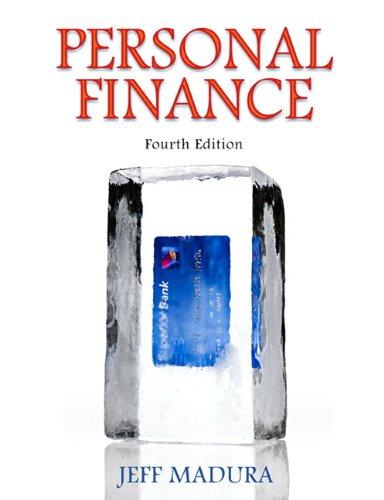Answered step by step
Verified Expert Solution
Question
1 Approved Answer
Duration & Convexity Revisited: You have a 4-year 5% coupon bond (annual coupon payments) with a face value of $1,000. The spot rate term structure
- Duration & Convexity Revisited: You have a 4-year 5% coupon bond (annual coupon payments) with a face value of $1,000. The spot rate term structure is shown in the table below.
| Maturity | Spot Rate | Discount Factor | Cash Flows | PV Cash Flows | $-Duration | Convexity |
| 1 | 4.0% | .9608 | 50 | 48.04 | 48.04 |
|
| 2 | 4.25% | .9185 | 50 | 45.93 | 91.86 |
|
| 3 | 4.75% | .8672 | 50 | 43.36 | 130.08 |
|
| 4 | 5.25% | .8106 | 1050 | 851.13 | 3404.52 |
|
| Ytm = | 5.20% |
|
|
|
|
|
- Calculate the discount factors, PV of the bond, $-duration (delta), Macaulay Duration and $-convexity. Put the values in the table above.
Use the following formulas to calculate delta (dollar duration), Macaulay Duration and $-convexity:
$ = [1 PV(K1)] + [2 PV(K2)] + [3 PV(K3] + + [T PV(KT)]
DMac = $/
| |
- Assume the term structure makes a 200 bps shift upward. Estimate the new price of the bond using the duration relationship. Assume the reference rate is the current ytm.
- For the same 200 bps upward shift, estimate the new price of the bond using your answer in B above and the convexity correction.
The duration relationship with the convexity correction states:
- Calculate the new price of the bond using the discount function after the term structure shifted up by 200 bps.
Step by Step Solution
There are 3 Steps involved in it
Step: 1

Get Instant Access to Expert-Tailored Solutions
See step-by-step solutions with expert insights and AI powered tools for academic success
Step: 2

Step: 3

Ace Your Homework with AI
Get the answers you need in no time with our AI-driven, step-by-step assistance
Get Started


